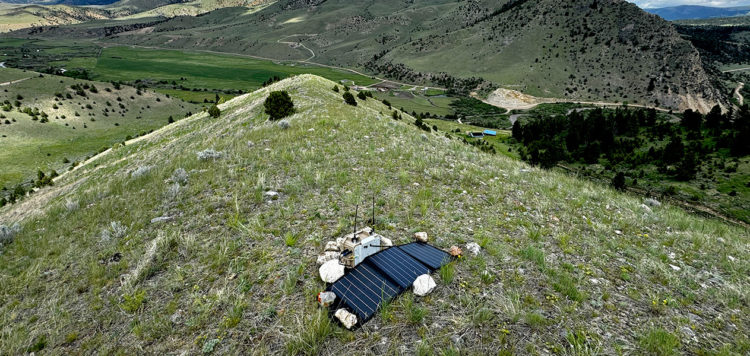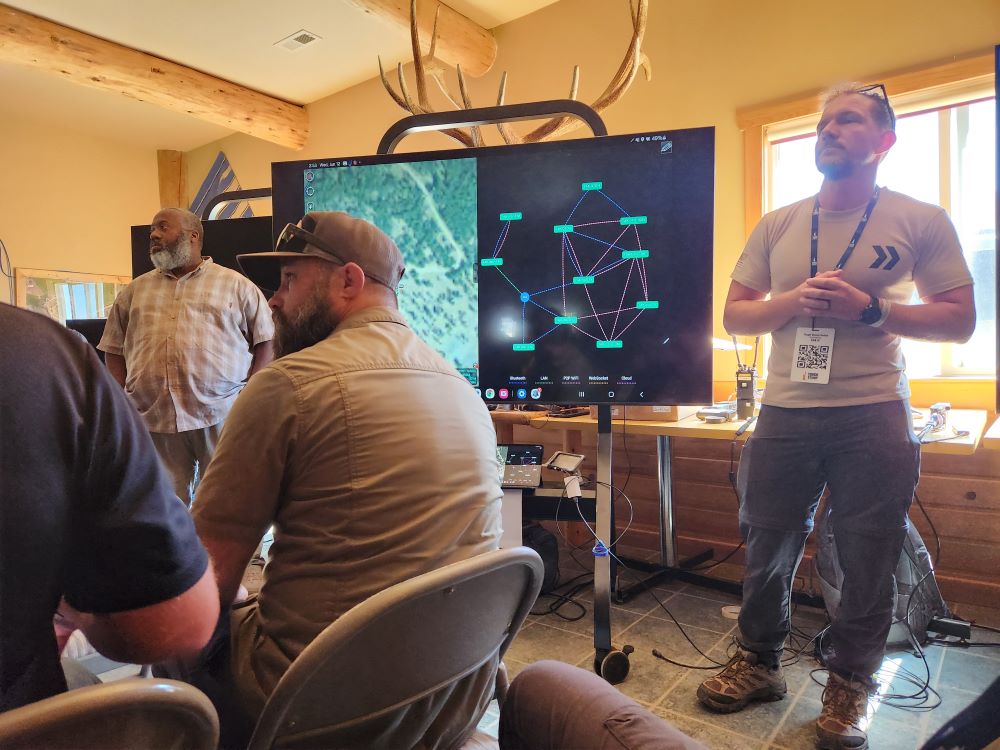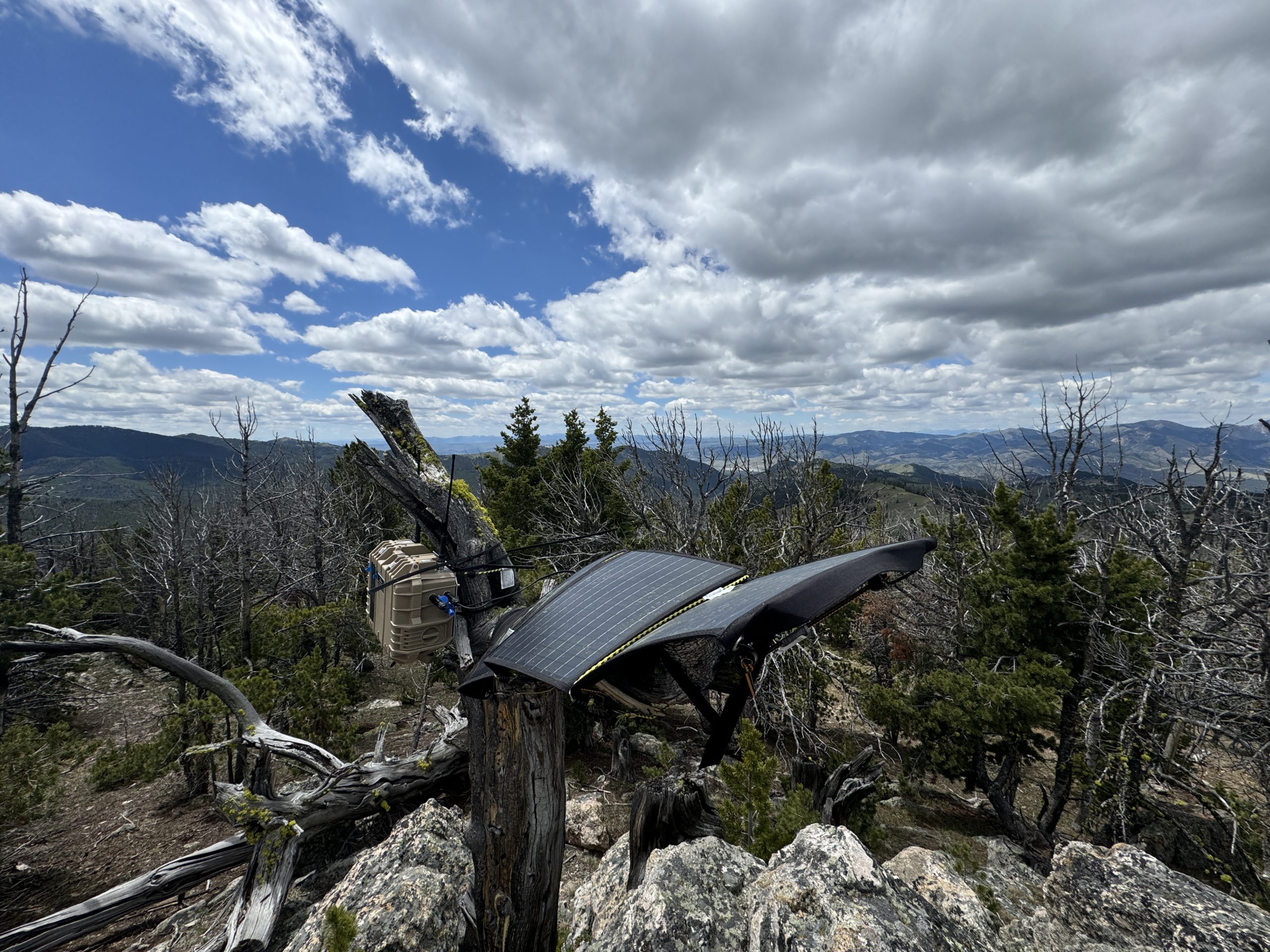The future of mission critical comms on display at Tough Stump Rodeo 2024

Each year, Tough Stump’s Rodeo event brings together some of the most innovative and exciting communications technology providers to demonstrate how their new solutions and capabilities could benefit warfighters in real-world tactical environments.
The Tough Stump Rodeo is a unique and essential tool for military, law enforcement, first responders, and forestry decision-makers. Unlike traditional conferences and expositions, it gives those making equipment buying decisions an opportunity to be “hands-on” with innovative new technologies and see how they perform when they’re called upon in the field. The remote and austere environment allows the providers to push their technologies to the limit.
goTenna was one of the many cutting-edge companies present at this year’s Tough Stump Rodeo. But they weren’t just there to test their solutions and demonstrate their capabilities – they were also there to deliver mission-critical connectivity for the other participants.
We recently sat down with Tim Miller, the Director of Customer Experience at goTenna, who was on-site for this year’s Tough Stump Rodeo. During our discussion, we asked Tim about the importance of this event, the role that goTenna played, and the exciting new capabilities that the company had on display.
 The Last Mile (TLM): Can you tell our readers a bit about the Tough Stump Rodeo? What is this event, and what is its purpose?
The Last Mile (TLM): Can you tell our readers a bit about the Tough Stump Rodeo? What is this event, and what is its purpose?
Tim Miller: Tough Stump’s Rodeo is an opportunity for government and military customers to see exciting new technologies that could solve problems in remote environments like the modern battlefield, directly relevant to your work. These technologies can increase operator and warfighter safety, improve communications capabilities, or otherwise enhance situational awareness for senior military and public sector decision-makers.
But the Tough Stump Rodeo isn’t just some standard exposition in a convention center. It’s a unique field test that puts these technologies into use in an extremely remote and austere environment.
This year’s Tough Stump Rodeo was held on a 20-mile by 70-mile plot of land in a remote part of Montana. Due to the rugged terrain, the vast majority of the area of operation (AO) had no cell coverage whatsoever, requiring participants to operate like they would have to in a comms-denied or degraded environment—which will invariably be the norm for our military in this new era of Great Power Competition.
It also allows first responders and public sector officials to simulate use cases where internet and cellular communications are down—as is often the case in emergency scenarios. In fact, in the few areas with cellular coverage—typically in small towns adjacent to the AO—the cell sites were designed to cover the town and a few thousand people, not a large surge one would use during a disaster response.
TLM: What was goTenna’s role at this most recent Tough Stump Rodeo event?
Tim Miller: goTenna attended Tough Stump Rodeo to provide vendors and observers with a Situational Awareness TAK backbone. Our off-grid, ad hoc mobile mesh network spans the operation area to enable vendor companies to communicate among multiple sites across a vast, austere environment.

goTenna’s network serves three purposes. The first is to provide positional situational awareness for Tough Stump team members. Our network also serves as a tool for intra-team messaging in austere conditions, and there is no cellular coverage to coordinate the event. Finally, event coordinators use our network for real-time communication in the event of life-safety issues during the rodeo.
Our network’s ability to provide real-time communications with the operations center also allows the event coordinators to interact with local public safety agencies. This is important in case there is a real-world emergency.
TLM: Was goTenna strictly there to provide a communications backbone for the event, or was the company also testing or demonstrating its technology?
Tim Miller: Tough Stump’s Rodeo is a “double duty” event for goTenna. We’re always there to help provide mission-critical communications and situational awareness – our demonstrated reliability makes us an excellent choice for filling this need. But it’s also an incredible opportunity to test out new capabilities and solutions we’re developing and test the physical limits and boundaries of our products and solutions in a real-world environment.
This year, we conducted real-world operational deployment of our production EdgeRelay systems. These semi-permanent relay devices can be left in an operational area for a significant amount of time where they will function to blanket a large area with a mobile mesh network. Their ability to be powered externally and their baked-in ruggedization ensures that the network they enable is always available when it’s needed.

During the Rodeo, we deployed six EdgeRelay devices, including a few modified “flyable” models carried to the event by goTenna personnel as carry-on luggage. While they may have confused some poor TSA agents, their portability was critical to the operation. We were trying to simulate how viable these solutions are in “quick deployment” scenarios – when disaster strikes and a resilient emergency network needs to be deployed quickly by individuals flying to the area to respond.
Due to the austere environment, we needed to augment the internal battery of EdgeRelay units with solar panels, given the extremely remote locations where the units were deployed. Each unit was deployed with a 60-watt foldable solar panel, continuously maintaining the state of charge of the internal system battery.
TLM: How were the EdgeRelay devices used? What was goTenna looking to demonstrate with them – aside from their ability to be quickly and easily brought to the mission area and deployed?
Tim Miller: There were a number of things that we were looking to test and demonstrate. First, we wanted to demonstrate the EdgeRelay’s dual radio configuration capability. This effectively allows the EdgeRelay to broadcast or create two separate mobile mesh networks that can be accessed by different individuals.
We did that successfully, with the team deploying each relay with an “A-side Network” used for the operational Rodeo admin network and a “B-Side Network.” That second network tested our forthcoming v2.0 software and firmware releases. Specifically, the team used the environment to test the performance of PLI, chat room messaging, and lightweight file transfer to observe behavior in a real-world environment. The rodeo’s operational environment allowed for up to 5-hops across the relays at a distance exceeding 100 kilometers. Outfitted with the new firmware and software, the second network tested the same operational footprint as the “A-side network,” allowing for performance comparisons with the currently available software.

The goTenna team also successfully utilized the newly released Relay Health Manager application. This Android application allows operators to monitor EdgeRelays remotely without having to revisit their locations physically. Using the application from anywhere in the mesh coverage area, personnel could check the battery status of each radio in the EdgeRelays, observe the radio operating temperatures, and see network hop counts and the number of messages each relay processed. Over the 4-day deployment, most of the network relays processed over 10,000 PLI and chat messages.
Most excitingly, the goTenna team also demonstrated SkyWave™ backhaul over HF to a site in Richmond, VA, more than 3,000 km (1,800 miles) away to simulate backhauling of mission situational awareness data to a command center team deployed the system in multiple locations using two radio types and several different antenna configurations to test and demonstrate different deployment scenarios. The command center could see every member’s location across the 2,500 square kilometer AO through PLI updates, exchange messaging with the local tactical operation center (TOC), and, in one case, even monitor an airborne asset’s altitude, fuel, and location.
TLM: You mentioned SkyWave. What, exactly, is SkyWave, and what does it do?
Tim Miller: SkyWave is a new product that goTenna debuted during the recent SOFWeek event. We’re incredibly excited about this technology because it is a game-changing capability for missions requiring beyond-line-of-sight (BLoS) communications and situational awareness without relying on a third-party network like satellite, cellular, or internet. It introduces the ability to create global situational awareness without third-party points of failure.

SkyWave enables network backhaul for goTenna mobile mesh networks using standard HF-3G ALE connectivity. This solution allows operators to communicate critical information in environments where satellite, cellular, or internet connectivity is not an option or inappropriate.
TLM: Why were these results exciting for goTenna? What was the company able to demonstrate that would be useful for military users?
Tim Miller: One of the most exciting takeaways from our time at Rodeo was our ability to establish a goTenna communications area in the operations zone covering more than 2500 square kilometers (1000 square miles). Even more impressive, we accomplished that in just a few hours, with three teams of two goTenna employees spreading out across the operational area and deploying two EdgeRelay solutions each – and we didn’t have to touch them again until we picked them up after the event concluded.
Within just a few hours, and with incredibly low-cost equipment, we could establish an ad-hoc, mobile mesh network that could support more than 50 users depending on it during the Rodeo event. In addition to this setup, the infrastructure was “owned” by the operators, including the long-haul HF reach back. This approach allows mission-critical solution deployment without reliance on third-party communications providers or additional services OPEX.
Our ability to use SkyWave to establish a cross-country backhaul for the network was truly amazing. In our demonstration, we were able to connect the network in Montana to a “command center” more than 3000 kilometers away in Virginia. The equipment that we used to accomplish this was significantly more affordable and, importantly, more reliable than traditional alternatives, including cellular on wheels (COW) solutions or VSAT offerings.

The military applications for this technology are almost limitless. It would enable a forward-operating group to quickly and easily establish essential communications and situational awareness capabilities even in places where traditional comms are denied. It would then allow them to backhaul that data to another group on the other side of the country or in another country.
That capability alone is impressive. But to be able to do this at such a low cost and to set up a network like that in an ad hoc manner so quickly? That is genuinely game-changing for global goTenna end users.
To learn more about goTenna’s EdgeRelay solution, click HERE. For more information on how to monitor EdgeRelay networks remotely from one app, download our Relay Health Manager app 1-pager HERE.









No Comment